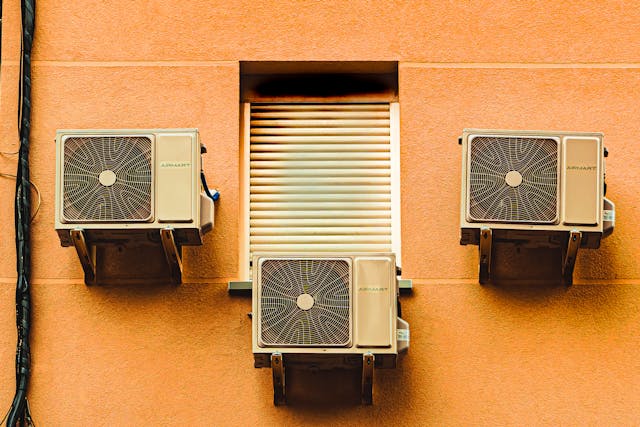It can be difficult to picture a period when air conditioning was a luxury because so many people today actively rely on it as a necessary component of existence. However, when room air conditioners first appeared, many people had doubts about their ability to function. MrCool Air Conditioners, mrcool mini split, Heat Pumps, and Furnaces are designed, developed, and produced by the company. Being a proudly American business, MRCOOL designs and plans from its headquarters and warehouse in Kentucky, USA.
One of the most well-liked and highly rated HVAC brands on the market is MRCOOL. Without the need for a technician to visit, hundreds of thousands of people have installed MRCOOL units in their homes.
How did it all begin?
Dr. John Gorrie was the first to patent an indoor cooling system in the 1840s, and in 1907, engineer Willis Carrier created the earliest iteration of the current Air conditioner unit. Carrier’s system worked by heating or cooling water to humidify and dehumidify the air, and despite widespread skepticism and caution, air conditioning started to gain favor. Businesses used it exclusively at first, but as soon as nickelodeons started utilizing air conditioning to improve movie viewers’ experiences, the general people began to enjoy the conveniences of chilled air. By the end of World War II, air conditioning systems were being promoted in the media as a contemporary amenity that would soon be affordable for any homeowner to enjoy, and by the late 1960s, they were standard in newly constructed homes.
An insight to several types of air conditioners
Different residences and businesses call for diverse types of air conditioning systems. Consider your initial and continuing budget, the available space, and any top goals, such as noise level or environmental impact, as you choose the optimum cooling system for your building.
- Mini-Splits without ducts
Many air conditioning systems distribute cooled air through ductwork, whereas ductless mini splits do not. Instead, single-zone micro splits cool and dehumidify each room independently using a separate fan and evaporator. Multiple rooms in a house can be easily cooled using multi-zone devices.
Mini-splits are particularly energy efficient because they don’t require ductwork. Duct losses from improper installation in forced-air systems can account for more than 30% of the system’s overall air usage. They work with an indoor air-handling unit, an outdoor compressor or condenser system, and a conduit that connects them. They are perfect for small spaces because they run silently and are often mounted from the ceiling or to the top of a wall. Because there isn’t enough room for ductwork, mini splits are also frequently found in apartment buildings and other places besides single-family houses.
Compact four-way cassette types and standing or floor-model mini-splits are additional installation alternatives. However, as you can see from the diagram of a mini-split Air Conditioner, the operation of the units is the same regardless of where they are situated.
These air conditioners are simple to use and install. Even better, MRCOOL offers DIY mini-splits that come pre-charged with line sets so you can rapidly install them by yourself without specific tools or expertise.
- Air Conditioners with DC Inverters
HVAC (Heating, Ventilation, and Air Conditioning) systems using DC inverters operate by first transferring power through an inverter, which controls the temperature and refrigeration. DC inverter systems are very efficient since the refrigerant capacity may be changed as needed. Extreme variations, which can waste energy, won’t occur with this style of operation.
DC inverter HVAC systems are excellent for any house or business owner that needs quick and dependable cooling while keeping their energy costs down because they are quiet and cost-effective.
- Central Air Systems
Chilled air from the air conditioner throughout the home. The air is released through registers in the walls, floors, and ceilings. Before returning via the vent registers and into the ducts, where the central air conditioning system re-chills it, the air naturally warms as it moves. Either these systems are divided or packed.
Split systems have an inside cabinet that contains the evaporator and an outdoor cabinet that houses the compressor. The evaporator, condenser, and compressor components are housed in a single exterior cabinet found on the flat roof or firm foundation of a building that contains a packaged unit.
Two sets of coils—the evaporator and condenser—can be seen on a diagram of a central air conditioning system. The refrigerant that passes through these coils allows central air systems to chill a whole house quietly and uniformly.
- Geothermal
Geothermal air conditioning is a smart choice for people looking for a cooling system that is secure, ecologically friendly, and minimal maintenance. Geothermal heat pumps circulate warm or cooled air around a house by using the temperature of the earth to cycle water or refrigerant through subsurface piping. Geothermal systems can reduce a building’s energy usage by 50% when compared to conventional HVAC systems.
MRCOOL GeoCool air conditioning is a long-lasting, dependable system that is noise-free, easy to use, and has few components. Additionally devoid of harmful carbon dioxide, carbon monoxide, and greenhouse emissions are GeoCool geothermal air conditioning.
Mrcool Air Conditioners, mrcool mini split and other product available at KPaul Industrial, as well as in-store. Since 2006, it is one of the leading distributors in the United States of America. Also, you get amazing deals and exclusive discounts on bulk orders.
Read More blog -https://knosten.com/





